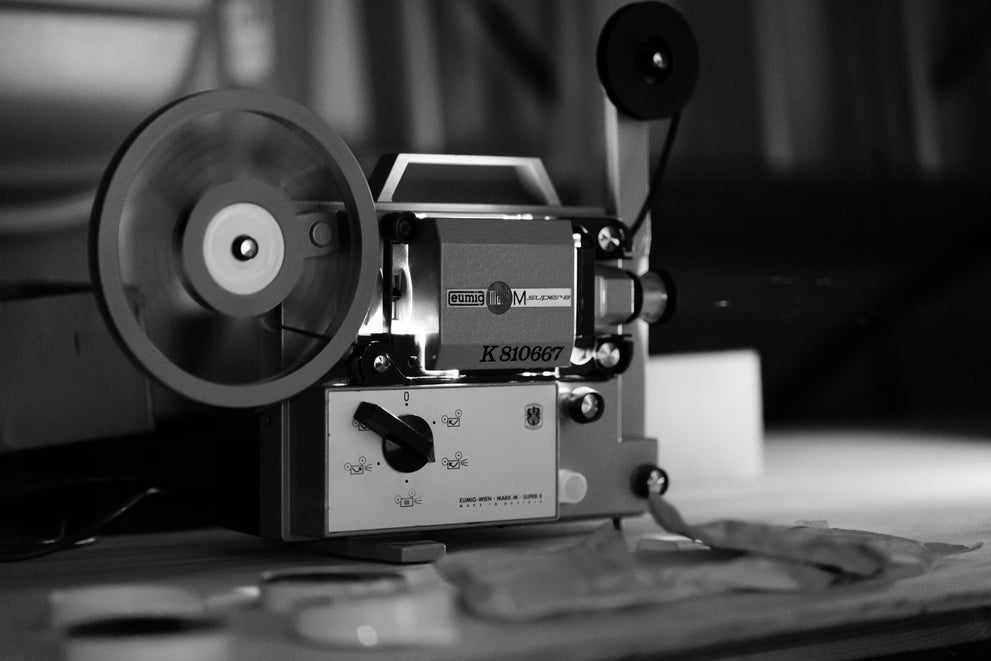Even though a film projector is the size of a box, it’s one of the most complex devices ever invented.
The seemingly simple film projector is constantly working and moving in sync to make motion pictures possible.
It’s crazy to think a strip of still photos on film can turn into a full-length action movie right before your eyes by using a film projector.
So how exactly does this technology work? We’ve broken down the complex system into a simple explanation below.
The film projector continually moves reels of film roll on wheels called sprockets using the power of an electric motor. The film will start on the supply reel and finish on the takeup reel. When the movie is finished, the film can be used in the same order once again, but it’ll be on a different reel.
As the film moves along this conveyor belt, it’s exposed to the lamp and lens in the middle of the film projector for just an instant before moving toward the takeup reel. This exposure to the light is the moment in which the film is seen on the lens and displayed on the viewing screen. A shutter is used to prevent blur while the images are moving past the lamp and lens at a rapid pace. Film projector lights are typically xenon bulbs because xenon is very bright and can illuminate for over 2,000 hours.
Once the film roll passes by the lens, it then passes through the sound drum to correspond the sound with the picture. The sound drum is offset by 26 frames from the lens to make sure the sound and picture are synced.
The reel has to move fast to make the film appear to have motion. How fast exactly? Film projectors move 24 frames per second for a movie. That’s a lot of film for a full-length feature! This speed is necessary to trick the human eye into thinking the still film frames are moving.
A movie this long might take multiple reels. A film projector has a “platter” that can line up the reels to sync the film. A projectionist will “splice” the reels together by taping the last and first strip of film rolls so the movie continues to play without delay.
Although digital movies use different types of projectors, a lot of the technology is parallel to the original film projector such as the need to use light and mirrors.















